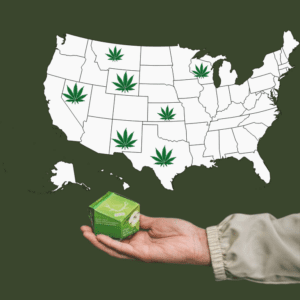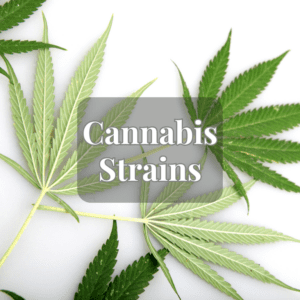Colorado and Washington: Cannabis Regulation Success Stories

When Cannabis is Rescheduled, States Can Look to Colorado and Washington for Ideas on How to Regulate It
The U.S. Drug Enforcement Administration (DEA) is moving towards reclassifying marijuana, making it a legal but regulated medicine akin to drugs like Tylenol with codeine or certain steroids. This decision represents a significant shift in federal cannabis policy, prompting 26 states where cannabis is currently illegal to decide how they will handle this change. These states will need to either take action to prevent the sale of cannabis within their borders or figure out how to regulate the newly legalized drug.
While some states, like North Carolina, have laws that would automatically legalize cannabis once federal changes take effect, many will look to states with established cannabis markets, such as Colorado and Washington, for guidance. These two states, with over a decade of experience in regulating cannabis, offer valuable lessons on managing this complex marketplace.
Early Adopters: Colorado and Washington’s Different Paths
In 2012, Colorado and Washington became the first states to legalize recreational marijuana, but they chose different regulatory paths. Colorado took a more open approach by allowing an unlimited number of marijuana retailers, fostering a competitive market. From an economic standpoint, competitive markets tend to lower prices and improve the quality of goods and services for consumers.
Washington, on the other hand, opted for a more controlled approach by limiting the number of retailers and restricting competition. This strategy was designed to maintain higher prices to discourage overconsumption and mitigate societal burdens, such as increased healthcare costs and negative effects on adolescents.
One might expect Colorado’s liberal licensing approach to result in significantly lower marijuana prices compared to Washington’s restrictive model. However, during 2022, the average retail prices of marijuana were actually slightly higher in Colorado than in Washington, despite minimal regulatory changes since 2012. This unexpected outcome can be explained by three key policy differences: the cap on total licenses, the size limits on companies, and vertical integration rules.
Limited vs. Unlimited Retail Licenses: Key Differences
The first major difference lies in how each state regulates the number of retail licenses. When Colorado legalized recreational marijuana, it allowed an unlimited number of licenses for growers, distributors, and retailers, creating a highly competitive market environment.
In contrast, Washington initially capped the number of retail licenses at 334, which equates to 4.8 dispensaries per 100,000 people. This cap was later raised to 556 to accommodate medical dispensaries, but as of March 2024, only 469 of those licenses were active. Meanwhile, Colorado maintains 680 retail licenses, roughly 14 dispensaries per 100,000 people, about three times the number in Washington on a per capita basis.
While Colorado’s approach suggests a more competitive market, the reality is more complicated due to a second key policy difference—restrictions on company size.
A David vs. Goliath Market: Company Size Restrictions
Washington’s regulations limit the number of marijuana licenses each business can own, fostering a market favorable to smaller companies. Each recreational marijuana business in Washington can own up to five dispensaries, three growers, and three processors. On average, a Washington marijuana business holds about 1.24 licenses, creating a market with many small operators.
In contrast, Colorado’s market is more conducive to larger chain companies. On average, a business in Colorado owns 9.6 licenses. This regulatory environment attracts big players, such as LivWell, which holds 24 active recreational marijuana retail licenses across 14 Colorado cities and two cultivation sites in Denver.
This difference in approach has led to fewer large marijuana companies in Washington compared to Colorado. In Colorado, the presence of large chains makes it harder for smaller, independent businesses to survive, even though the state offers seven times more licenses than Washington. As a result, Colorado’s market, despite its higher number of licenses, has become less competitive and sees higher prices.
State Differences in Vertical Integration: A Critical Factor
The third key difference is the approach to vertical integration. Vertical integration occurs when a single company controls multiple stages of production and distribution. For example, in the cannabis industry, a vertically integrated company could grow marijuana, process it, and sell it in their dispensary.
Colorado initially required all marijuana retailers to be vertically integrated for the first nine months of legalization, meaning they had to grow at least 70% of the marijuana they sold. This policy was aimed at preventing black-market cannabis from entering the legal market. However, in 2018, Colorado removed the requirement, allowing companies to grow and sell to any retailer. Despite this change, most companies in Colorado remain vertically integrated.
Washington, however, strictly prohibits vertical integration, implementing a three-tier system similar to the alcohol industry. This system prevents any single business from controlling more than one stage of the cannabis supply chain, promoting a more competitive market structure.
Vertical integration can lower consumer prices by reducing the number of markups on a product. However, it can also make it harder for small companies to compete, leading to market concentration and potentially higher prices. In Colorado, the prevalence of vertically integrated businesses likely helped a few large players dominate the market shortly after legalization.
What Lawmakers Can Learn
The experiences of Colorado and Washington demonstrate that cannabis prices are influenced by a complex interaction of factors, including competition, market concentration, and vertical integration. As states consider how to regulate cannabis in light of its reclassification, they can draw several lessons from these pioneers:
To Lower Prices: States that want to make cannabis more affordable should encourage competition by issuing more licenses, keeping restrictions on business size, and allowing vertical integration. This approach fosters a diverse market with many small and large players, driving down prices.
To Control Consumption: States aiming to limit cannabis use may prefer to cap the number of licenses, avoid restricting the size of businesses, and prohibit vertical integration. This model creates a controlled market with fewer businesses, keeping prices higher to deter overconsumption.
A New Era of Cannabis Regulation
As cannabis moves toward being reclassified as a legal but regulated medicine, states face important choices in how they will regulate the market. By looking to Colorado and Washington’s experiences, lawmakers can design policies that balance public health concerns with the desire to create a fair and competitive market.
Whether a state aims to promote access through lower prices or control consumption through higher ones, the regulatory lessons from these early adopters provide valuable guidance for navigating this new era in cannabis regulation.











